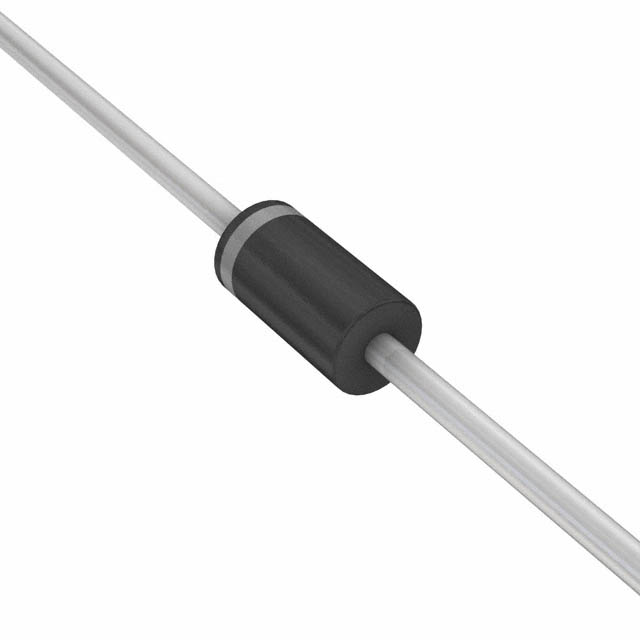P4KE130CA A0G
Product Overview
Category
The P4KE130CA A0G belongs to the category of transient voltage suppressor diodes.
Use
These diodes are used to protect sensitive electronic components from voltage spikes and transients.
Characteristics
- Fast response time
- High surge capability
- Low clamping voltage
- RoHS compliant
Package
The P4KE130CA A0G is available in a DO-41 package.
Essence
The essence of the P4KE130CA A0G lies in its ability to divert excessive current away from sensitive components, thereby safeguarding them from damage.
Packaging/Quantity
The P4KE130CA A0G is typically packaged in reels or bulk quantities, depending on the supplier.
Specifications
- Peak Pulse Power: 400W
- Breakdown Voltage: 117V
- Maximum Clamping Voltage: 185V
- Operating Temperature Range: -55°C to +175°C
Detailed Pin Configuration
The P4KE130CA A0G has a standard axial lead configuration with two leads.
Functional Features
- Transient voltage suppression
- Reverse standoff voltage protection
- Fast response to voltage spikes
Advantages and Disadvantages
Advantages
- Effective protection against voltage surges
- Fast response time
- Wide operating temperature range
Disadvantages
- Limited power dissipation capability
- May require additional circuitry for comprehensive surge protection
Working Principles
The P4KE130CA A0G operates by shunting excess voltage away from sensitive components, thereby limiting the voltage across them to a safe level.
Detailed Application Field Plans
The P4KE130CA A0G is commonly used in: - Power supplies - Telecommunications equipment - Automotive electronics - Industrial control systems
Detailed and Complete Alternative Models
Some alternative models to the P4KE130CA A0G include: - P4KE6.8CA A0G - P4KE15CA A0G - P4KE200CA A0G
This completes the entry for the P4KE130CA A0G, providing comprehensive information about its category, use, characteristics, specifications, pin configuration, functional features, advantages and disadvantages, working principles, application field plans, and alternative models.


